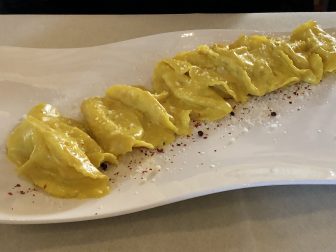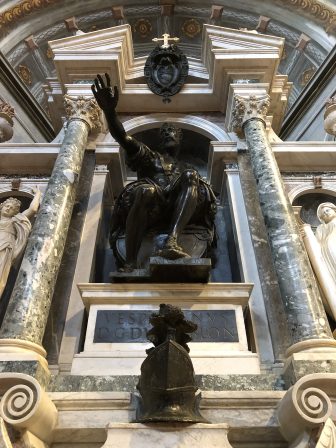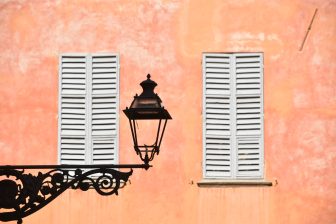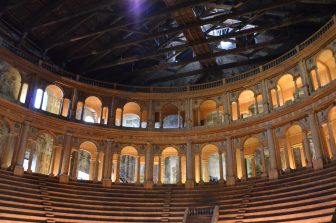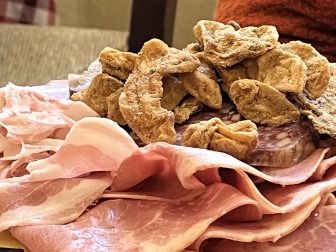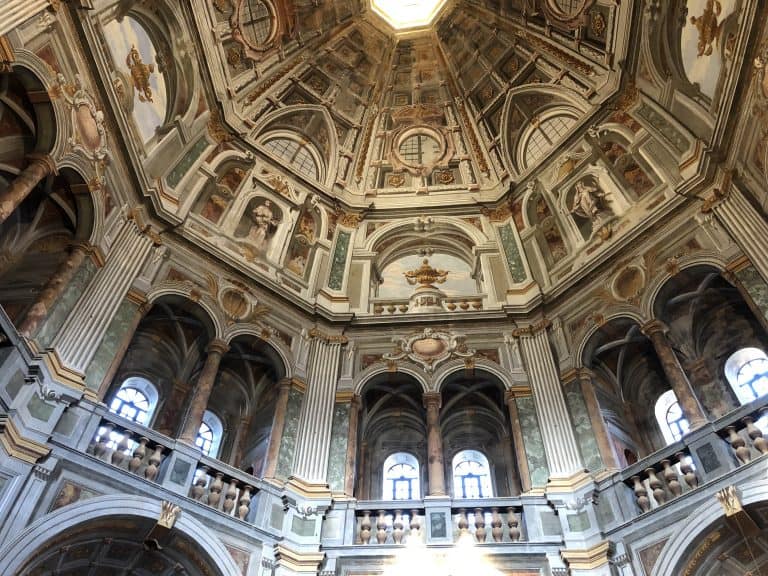
[ Nov.2018 ] Because of all the tourist attractions in Sabbioneta, the small town in the north of Italy closed at 1pm, so we looked for somewhere that we could eat a light lunch.
My husband found one place called Vaudeville, 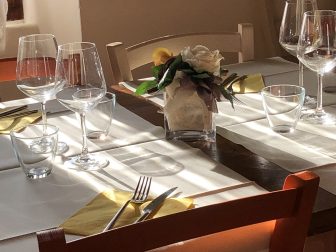
However, when we went upstairs, ushered by a member of staff, we found that it was a proper restaurant.
Unfortunately, we had a dinner meeting on that day, so we could not have a big lunch, but they had many attractive dishes on their menu.
Controlling ourselves, we had only a main dish and a glass of wine.
I chose the beef with the wine sauce and my husband had Ravioli with lemon.
We enjoyed the food very much.
The appetizer they served, which was a little plate of salami, was very good, too.
The atmosphere of the restaurant was nice and bright and an elderly couple and some other families were having a meal, taking their time.
The places that closed at 1pm reopened at 2:30pm.
After lunch, we headed for the Church of Incoronata, which is behind the Palazzo Ducale.
This 
I did not think much of the exterior, but when we got into the church soon after 2:30pm, I was very surprised to see the beauty of it.
The wall was full of beautiful trompe l’oeil, which means “trick of the eye”.
They were so good that I could not tell which was real and which was not.
The pictures gather towards the top of the ceiling, which made us think the ceiling was higher than the reality.
According to the information sheet we borrowed, the interior was done by an architect called Francesco Borelli.
He started working on this in 1768, but in 1770 he fell from the scaffold and died.
At one corner of this church, there is the mausoleum of Vespasiano Gonzaga, who built the whole town of Sabbioneta.
Apparently, rare marbles are used here.
His statue is on the marble base which was made in 1588 by a sculptor called Leone Leoni, who worked extensively, also in Spain and Austria.
The information sheet says that this statue is a combination of the equestrian statue of Marcus Aurelius in Rome and Gonzaga himself.
I looked up the Marcus Aurelius statue and found that the pose with the stretched hand looked similar.
Apparently, this church was modelled on another church with the same name, which was built towards the end of the 15th century in Lodi, a town located about 30km southeast of Milan.
I wonder if that original church has the beautiful trompe l’oeil, too.
I need to check that out.

